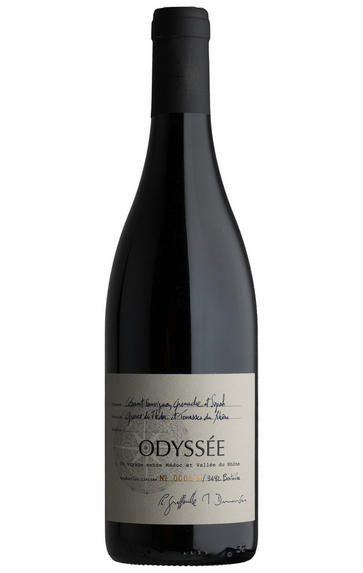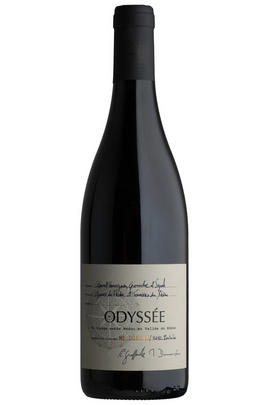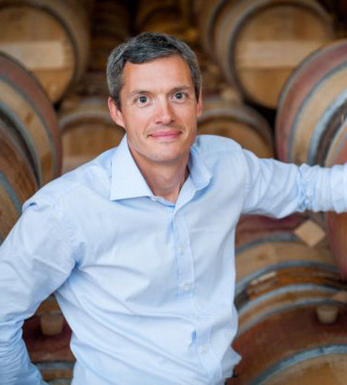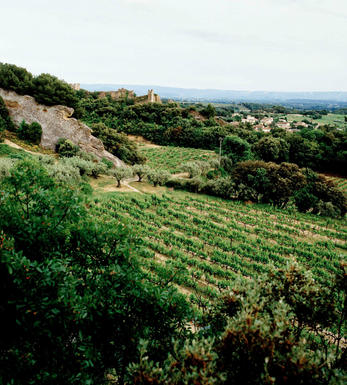
2019 Pierre Graffeuille, Odyssée, Vin de France

Critics reviews
Drink 2025 to 2038
Jane Anson, Inside Bordeaux (August 2022)
Milk chocolate cherry notes on the nose, ripe and welcoming. Supple, ample and fresh, this has nice definition on the palate with a bitter orange, dark chocolate and savoury garrigue herbal aspect coming through. It's still quite angular with edges of sweet spice, liquorice and toasted wood coming through but I like the confidence. It's full and bold, powerful but delivered with a controlled touch. The alcohol and wood stand out a touch and just mark the finish though there is nice tension and precision throughout. Made from 55% Cabernet Sauvignon from the Médoc (harvest from 25/9 to 8/10), 25% Grenache from the Southern Rhône (harvest from 17/9 to 19/9) and 20% Mourvèdre from the Southern Rhône (harvest from 19/9 to 21/9).
Drink 2025 - 2035
Georgina Hindle, Decanter.com (Aug 2022)
About this WINE

Pierre Graffeuille

France
Despite their own complacency, occasional arrogance and impressive challenges from all-comers, France is still far and away the finest wine-producing nation in the world and its famous regions – Bordeaux, Burgundy, Champagne, Loire, Rhône, Alsace and increasingly Languedoc Roussillon – read like a who’s who of all you could want from a wine. Full-bodied, light-bodied, still or fizzy, dry or sweet, simple or intellectual, weird and wonderful, for drinking now or for laying down, France’s infinitesimal variety of wines is one of its great attributes. And that’s without even mentioning Cognac and Armagnac.
France’s grape varieties are grown, and its wines emulated, throughout the world. It also brandishes with relish its trump card, the untranslatable terroir that shapes a wine’s character beyond the range of human knowledge and intervention. It is this terroir - a combination of soil and microclimate - that makes Vosne-Romanée taste different to Nuits-St Georges, Ch. Langoa Barton different to Ch. Léoville Barton.
France is a nation with over 2,000 years of winemaking, where the finest grapes and parcels of land have been selected through centuries of trial and error rather than market research. Its subtleties are never-ending and endlessly fascinating. Vintage variation is as great here as anywhere – rain, hail, frost and, occasionally, burning heat can ruin a vintage. Yet all this creates interest, giving the wines personality, and generating great excitement when everything does come together.
However, this is not to say that French wine is perfect. Its overall quality remains inconsistent and its intricate system of classification and Appellation d’Origine Contrôlée (AOC) based on geography as opposed to quality is clearly flawed, sometimes serving as a hindrance to experimentation and improvement.
Nevertheless, the future is bright for France: quality is better than ever before – driven by a young, well-travelled and ambitious generation of winemakers – while each year reveals new and exciting wines from this grand old dame.

Cabernet Sauvignon Blend
Cabernet Sauvignon lends itself particularly well in blends with Merlot. This is actually the archetypal Bordeaux blend, though in different proportions in the sub-regions and sometimes topped up with Cabernet Franc, Malbec, and Petit Verdot.
In the Médoc and Graves the percentage of Cabernet Sauvignon in the blend can range from 95% (Mouton-Rothschild) to as low as 40%. It is particularly suited to the dry, warm, free- draining, gravel-rich soils and is responsible for the redolent cassis characteristics as well as the depth of colour, tannic structure and pronounced acidity of Médoc wines. However 100% Cabernet Sauvignon wines can be slightly hollow-tasting in the middle palate and Merlot with its generous, fleshy fruit flavours acts as a perfect foil by filling in this cavity.
In St-Emilion and Pomerol, the blends are Merlot dominated as Cabernet Sauvignon can struggle to ripen there - when it is included, it adds structure and body to the wine. Sassicaia is the most famous Bordeaux blend in Italy and has spawned many imitations, whereby the blend is now firmly established in the New World and particularly in California and Australia.


Buying options
Add to wishlist
Description
Now in its 5th vintage, since the inaugural 2015, this Rhone-Bordeaux blend (bottled as Vin de France) from Mathieu Dumarcher and Pierre Graffeuille is one to look out for. Savoury garrigue, redcurrant and blackberry character, touch of heat on the finish but balanced out by spice and tar. Thoroughly enjoyable, with Cabernet Sauvignon from the gravel soils of the Médoc, blended with Grenache and Syrah from pebbles and clay-limestone soils of Châteauneuf-du-Pape and Gigondas.
Drink 2025 to 2038
Jane Anson, Inside Bordeaux (August 2022)
wine at a glance
Delivery and quality guarantee